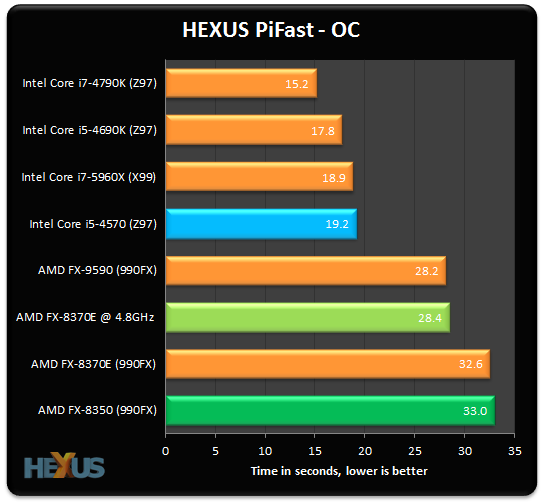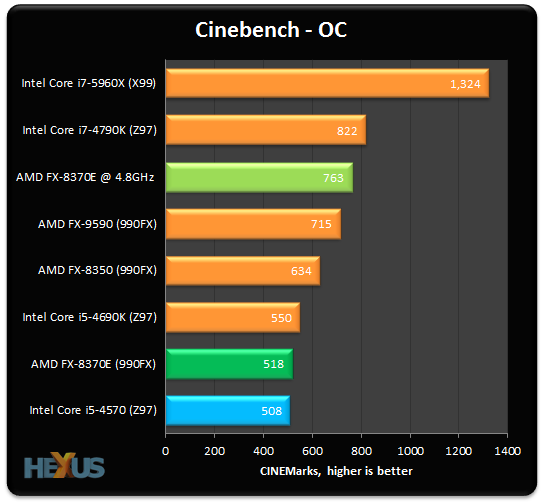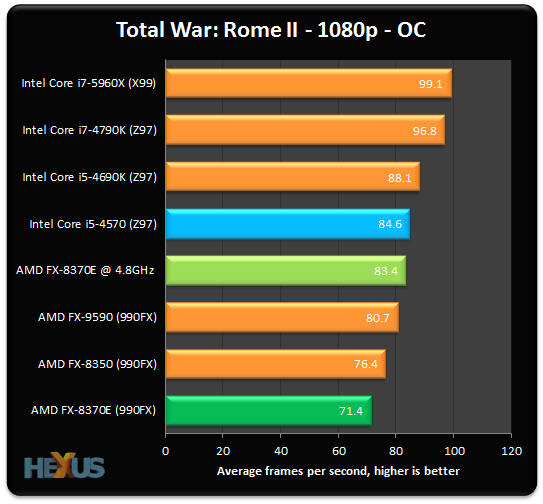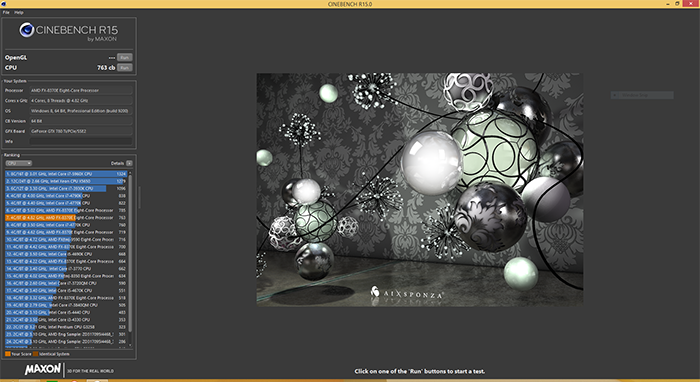Overclocking Performance
Armed with a 95W TDP, the FX-8370E is ripe for overclocking. We adjusted the CPU voltage from 1.2V to 1.425V and increased the all-core multiplier until the chip could no longer run a full iteration of HandBrake. 5GHz was semi-stable, but we chose to limit our processor to 4.8GHz.

Single-threaded performance goes up but not as much as you may expect; the stock chip turbos to 4.3GHz in any case.

We're now comparing an all-core 4.8GHz speed to 3.3GHz for the default chip. A 47 per cent improvement tallies well with the overclock.

A near-40 per cent rise in HandBrake puts the FX-8370E in very lofty company, and it is only beaten by the Core i7-5960X.

Lastly, extra speed does pay dividends in gaming, especially where the engine is CPU bound, and the 4.8GHz-clocked FX-8370E increases performance by 17 per cent. Do be aware that a stock-clocked Intel Core i5-4570 remains faster.
The obvious price to pay for the combination of extra voltage and frequency is increased power consumption. System-wide HandBrake power draw increases from 137W to a huge 288W. 3D consumption, meanwhile, jumps up from 333W to 397W. These kinds of numbers take away the energy-efficient nature of the CPU, of course.










